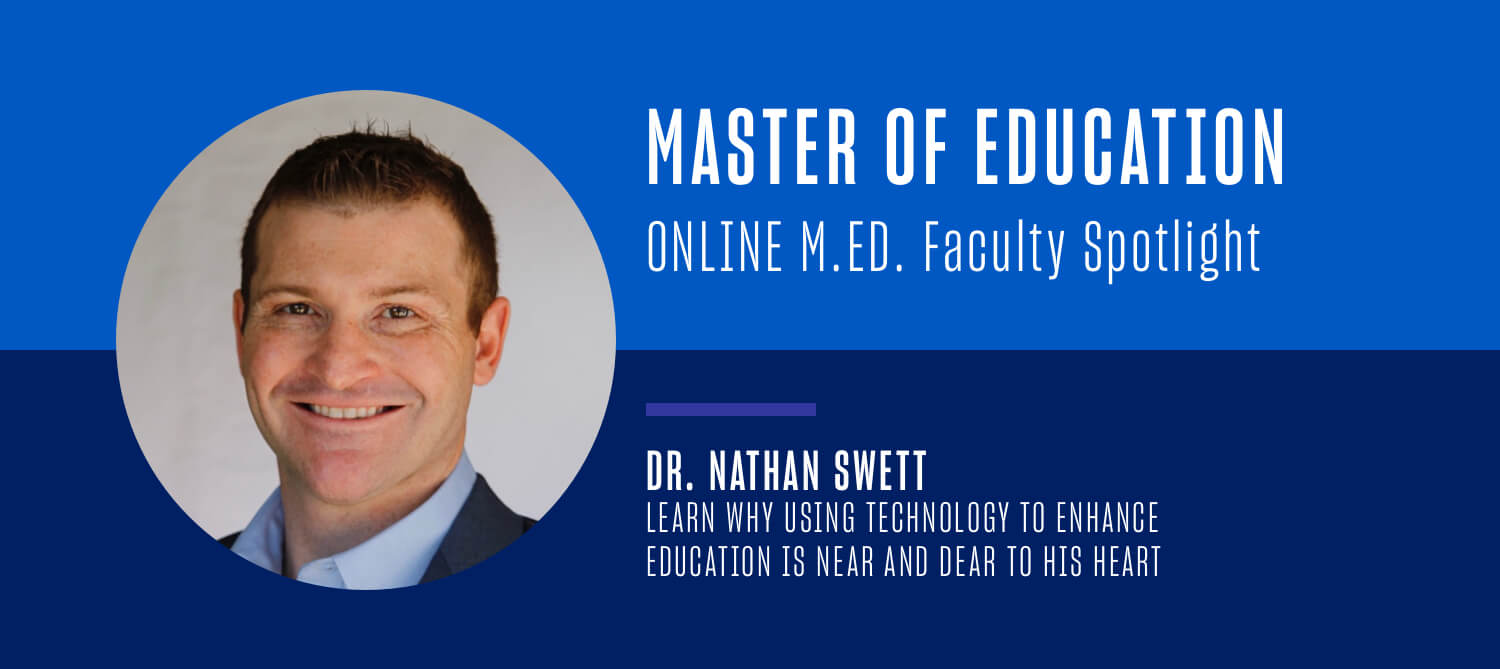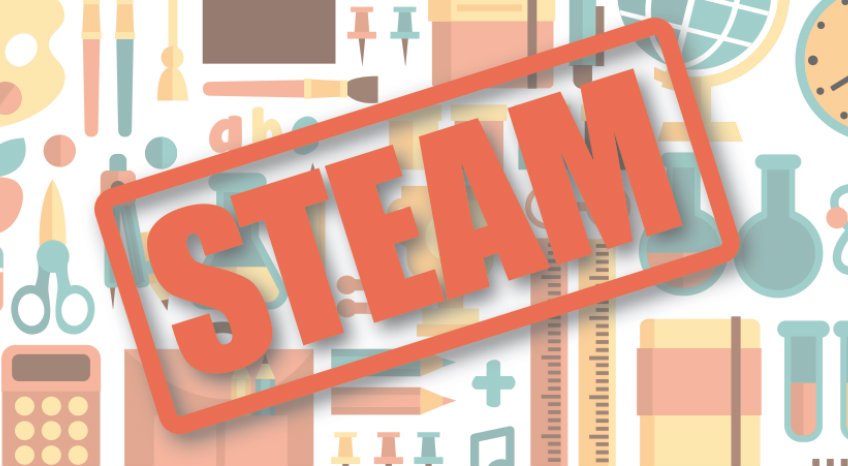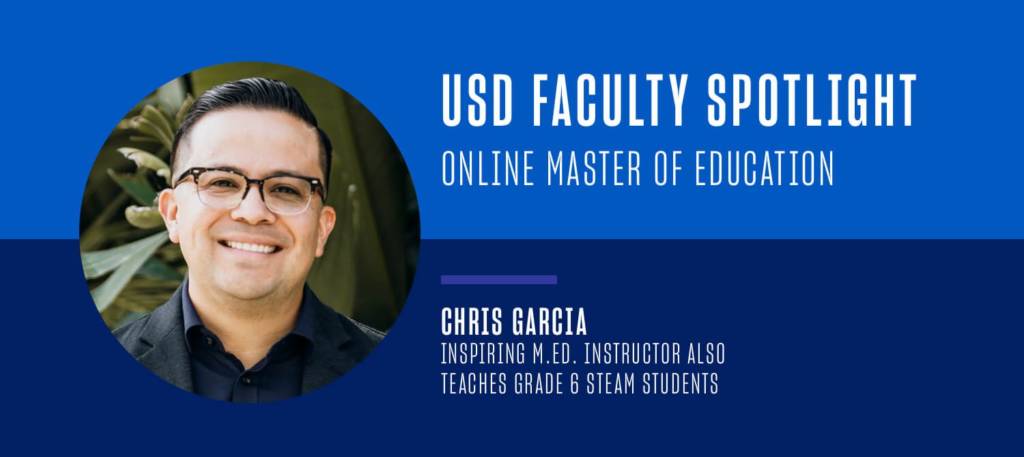From At-Risk Student to University Grad School Instructor
Imagine a kid with learning disabilities — a kid who was told more than once that he would probably never amount to anything because of those challenges — growing up to be a high achiever in the field of education, earning a doctorate and spearheading the creation of an innovative master’s degree specialization at a leading U.S. university.
Well, meet Dr. Nathan Swett — a man who holds the practice of using technology to level the playing field in education is near and dear to his heart.
Today Nathan is an instructor in the University of San Diego’s online Master of Education program, where he helped develop the school’s new MEd in Technology and Innovation (EdTech) specialization.
In a recent interview, he talked about his educational journey: from struggling with dyslexia through his early school years and beyond to earning a Doctor of Education (Ed.D.) and working with fellow educators to develop skills, tools and insights aimed at leveraging technology to unlock enhanced learning experiences for all students.
Discovering Assistive Technology … and Theater
Looking back, Nathan recalls, “I was told I would never end up going to a university, I would never end up amounting to anything. I had been told that all my life because of my disabilities.”
However, a pivotal point in his life was actually failing a high school English class. He was then required to take a summer class, which ended up being taught by a theater teacher.
“I was kind of the class clown, always acting up. But she moved me to the front of the class and really built a relationship with me and brought me into the theater in my junior year of high school.”
His newfound interest inspired him to focus on theater arts while pursuing an associate degree at Grossmont College, a move that proved to be fortuitous.
“So one thing I was exposed to at Grossmont was assistive technology. If you don’t know what that is, it is just any kind of technology that allows you to read, write, learn,” he explains. “So for instance, text-to-speech — being able to have the textbooks read out loud to me — gave me the ability to personalize my learning, and gave me different modalities of reading, which really improved my access to curriculum and materials that my peers had, but that I lacked.”
Assistive technology turned out to be a game-changer for Nathan, who recalls thinking, “Wow, I wish I could have had this at a younger age when I was going through K–12.” It was a revelation that he says “really inspired me to get involved in education.”
The Desire to Make an Impact
Assistive technology (AT) and augmentative and alternative communication (AAC) became a focus in both Nathan’s education and professional life.
Around 2007, he began working as an audio video technician at the University of San Diego, a period of time during which he also earned his bachelor’s degree from San Diego State and then a master’s in special education at USD.
Meanwhile, he also worked for a company called AssistiveWare, which developed an AAC app called Proloquo2Go that “really helps students with autism who are nonverbal, communicate.”
Additionally, “I opened my own nonprofit (Center for Advancement of Technology in Education) because … schools really needed a lot of training.” His activities with C4ATE involved conducting training for families and school districts, doing conferences, etc.
“And so that’s what led me to earn my doctorate at San Diego State, because I realized that what I was doing in schools and stuff … I felt like I was just putting band aids on things. And I needed to do something more because I felt teachers needed more training and exposure to technology before they got in the classroom.”
Reflecting on the connectivity between his own negative experience in education, his breakthrough experience with assistive technology and his ongoing accumulation of knowledge in the broader realm of technology in education, he thought, “How can I bring all that together to really make an impact?”
In 2016, he began teaching at the University of San Diego’s School of Leadership and Education Sciences, an experience that also influenced him to begin pursuing his doctoral degree.
Teaching Teachers How to Use Tech Tools in the Classroom
Several years into his teaching career at USD, Nathan began advocating for the university to provide more EdTech courses for teachers. The pandemic provided additional motivation for the school to expand its offerings related to how teachers utilize technology in the classroom.
As the idea for establishing an EdTech specialization within the online MEd program began to take root, Nathan became involved in scoping the curriculum and designing courses as well.
“Digitized Learning with Technology,” a course that he was instrumental in developing and currently teaches, focuses on “virtual learning by using technology and digitized learning education material that is accessible for all types of learners.” According to the course description, students learn about the foundations and frameworks of educational technology and how to use digital content and technology tools to transform traditional instruction.
“I teach teachers how to use those tools and how to bring them into the classroom and incorporate them for their students,” says Nathan. In fact, one of his students recently said of the course that she applied every single one of the assignments in her classroom and that the feedback from students has been inspiringly positive.
Nathan is especially excited about a course he is developing that is scheduled to be unveiled soon. It focuses on the intersection of EdTech and Universal Design for Learning (UDL), an approach to education that is intended to give all students an equal opportunity to succeed — in part by finding ways to create flexibility in how they access, engage with and communicate about the subject matter.
A Hands-On Approach to Virtual Teaching and Learning
In his virtual classroom, Nathan brings a hands-on approach to the job of using technology to teach other educators how to smartly and effectively utilize technology. “My philosophy is to give teachers practical hands-on projects that they can take directly into the classroom,” he says.
He also emphasizes hybrid models of teaching, saying, “I actually do my courses in a hybrid model so teachers can get exposure to it.” This involves “flipping the classroom so that it’s not this passive learning environment where the teacher is sitting there and just lecturing.” Instead, lectures are prepared and reviewed by the students, who then come together as a group to discuss the ideas and the material.
For example, “I have them actually use tools, and they present on Flipgrid (an EdTech video platform), which is … just a nice way to present and to demonstrate a tool that they could use in the classroom.”
The MEd in Technology and Innovation (EdTech) program at USD also prepares teachers to become “EdTech experts” and technology leaders in their classrooms, schools and districts, enabling them to potentially help even greater numbers of students.
Nathan looks forward to helping the university build on its status as a leader in the increasingly essential field of educational technology.
As for the future, Nathan sees EdTech continuing to remove barriers and giving students access to a wide range of immersive experiences (virtual field trips and educational expeditions to other parts of the world, 3D modeling/printing, virtual and augmented reality, plus much more) that would not be feasible without innovation in technology.
For more information on the University of San Diego’s online Master of Education program, we invite you to reach out through our contact page or visit our MEd degree page.




